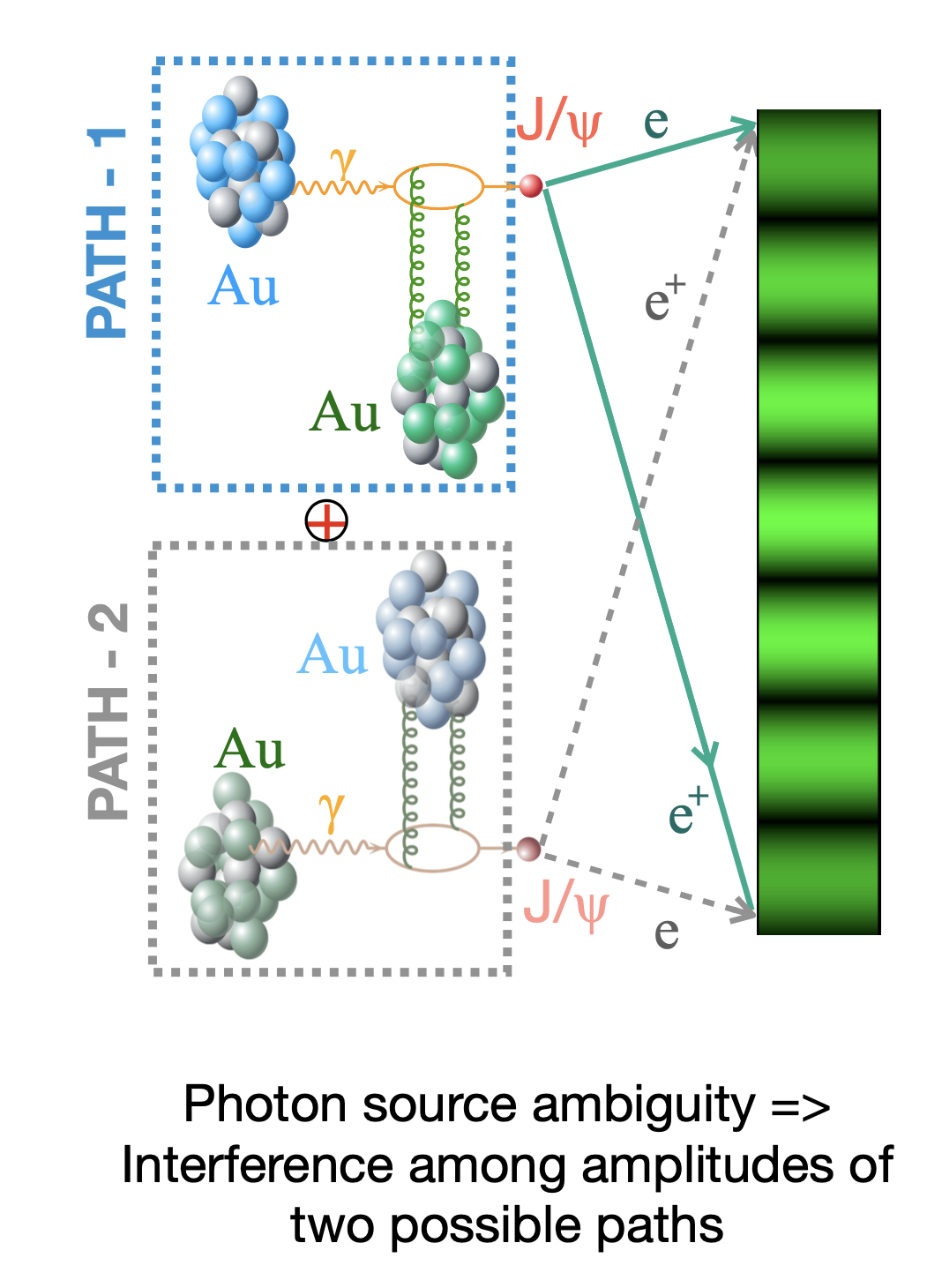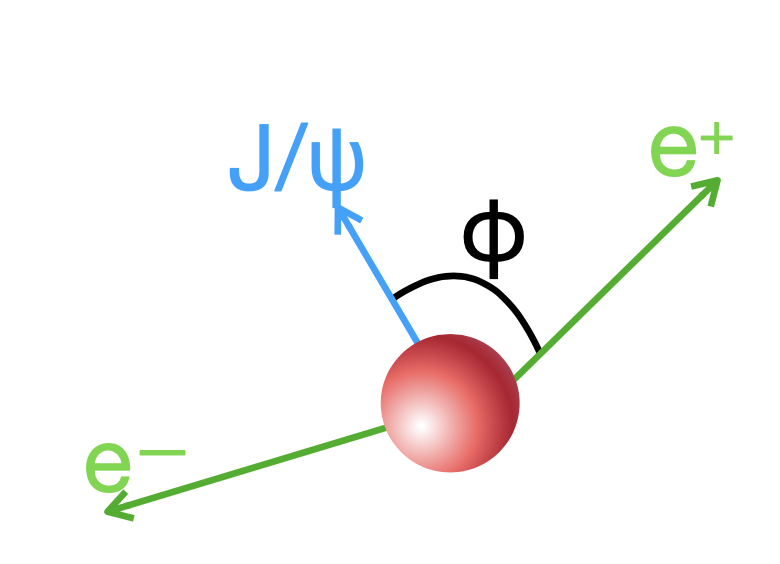Angular modulations of photo-produced J/psi in UPCs
Title: Evidence of Spin-Interference Effects in Exclusive $J/\psi \to e^+e^-$ Photoproduction in Ultraperipheral Heavy-Ion Collisions
PA's: Ashik Ikbal Sheikh, Kaiyang Wang, Declan Keane, Zhangbu Xu, Prithwish Tribedy, Daniel Brandenburg, Shuai Yang, Zebo Tang and Wangmei Zha
Target Journal: Physical Review Letters
Analysis Note: https://drupal.star.bnl.gov/STAR/system/files/analysis_note_upc_jpsi_ver1.pdf
Paper draft: https://drupal.star.bnl.gov/STAR/system/files/upc_jpsi_main_ver1.pdf
Abstract: We report the first evidence of spin-interference effects in exclusive photoproduction of the heavy vector meson $J/\psi \to e^+e^-$ in ultraperipheral Au+Au and isobaric collisions at $\sqrt{s_{NN}} = 200$ GeV with the STAR detector at RHIC. A significant $\cos 2\Delta\phi$ modulation with negative amplitude is measured, where $\Delta\phi$ is the angle between the sum and difference of the transverse momenta of the two decay electrons. This negative modulation contrasts with the positive amplitude reported for $\rho^{0} \to \pi^+\pi^-$ photoproduction, where both the parent and daughters are bosons. Our observation resolves the ambiguity regarding whether interference originates from the vector meson or its decay daughters: unlike $\rho^{0} \to \pi^+\pi^-$, the modulation in $J/\psi$ decays reflects interference between spatially-separated fermionic wave functions for the decay products. Furthermore, the heavier mass and compact size of the $J/\psi$ enable us to probe the gluon distribution at much finer transverse scales, making it an ideal tool for gluon tomography and a reliable benchmark for comparisons to perturbative calculations in the Color Glass Condensate (CGC) framework. The observed negative modulation is strongest at transverse momentum below 120~MeV/$c$ in both Au+Au and isobar collisions. The CGC calculations qualitatively reproduce the sign and scale of the observed modulation. These findings open a new avenue for using angular correlations driven by spin interference as a powerful new tool that extends the traditional use of photoproduced $J/\psi$ cross sections for probing gluon structure inside nuclei.
Introduction:


FIG. 1a: UPC quasi-real photons are linearly polarized. The photons fluctuate into quark anti-quark pair and interacts with the Pomeron of the other nucleus which produces a Vector Meson (e.g., ρ, J/ψ, etc ). Vector mesons are short lived particles, so they decay and the decay daughters are preferentially emitted along the Vector Meson's spin direction due to angular momentum conservation. In UPC vector meson production process, there is an ambiguity that which nucleus provides photon and which one serves as a target. So there are two possible paths as shown in the cartoons here. In path1, nucleus 1 provides photon and nucleus 2 serves as target. In path2 it is just the other way around. These two paths are indistinguishable in experiment. Both the paths have amplitudes or wave functions since it’s a quantum particle. The wave functions from the two indistinguishable paths may interfare and make the cos(2φ) modulation observable. Since the vector mesons have spin, it is spin-dependent interference.
.png)
FIG. 1b: The spin interference phenomena with UPC vector meson ρ and J/ψ. The J/ψ has longer life span than ρ, and hence extended wave function. This makes the J/ψ an unique candidate for the spin interference study. J/ψ decays into fermions (elctron-positron pair) helps resolve the question regarding the level of interference (parent level or daughter level).
J/ψ reconstruction:


FIG. 2. J/ψ is reconstructed in e+e- channel. The e+e- invariant mass distribution in Au+Au UPC (left plot) and Isobar UPC (right plot) at 200 GeV. The two-photon background is also shown underneath the J/ψ peak. The relative signal and background contributions have been estimated and listed on the plot.
Results and Discussions:


FIG. 3. (Left) Experimental observable for vector meson spin interference effect is the angle between J/ψ and one of the decay electrons, we call it φ. (Right) Measured φ observable in Au+Au and Isobar collisions at UPC 200 GeV.

Summary and Conclusion: In summary, we observed spin interference in photoproduced $J/\psi$ mesons in ultraperipheral collisions, leveraging their longer lifetime (2160 fm/$c$) and delocalized wave function. Unlike $\rho^0$, $J/\psi$ exhibits a negative modulation, revealing interference between two fermionic wave functions at a finite separation. As a heavier meson ($3.1$ GeV/$c^2$ vs. $0.77$ GeV/$c^2$ for $\rho^0$), $J/\psi$ probes gluon distributions at finer spatial scales, making it a valuable tool for CGC studies. However, current CGC calculations only qualitatively describe the data, highlighting the need for theoretical refinements. These findings establish spin interference as a powerful new approach for gluon tomography.
- ashik's blog
- Login or register to post comments
